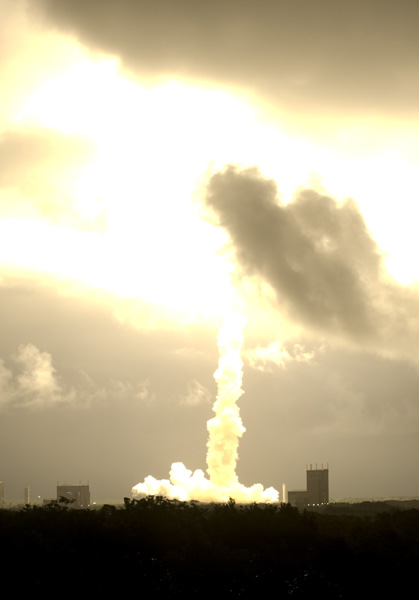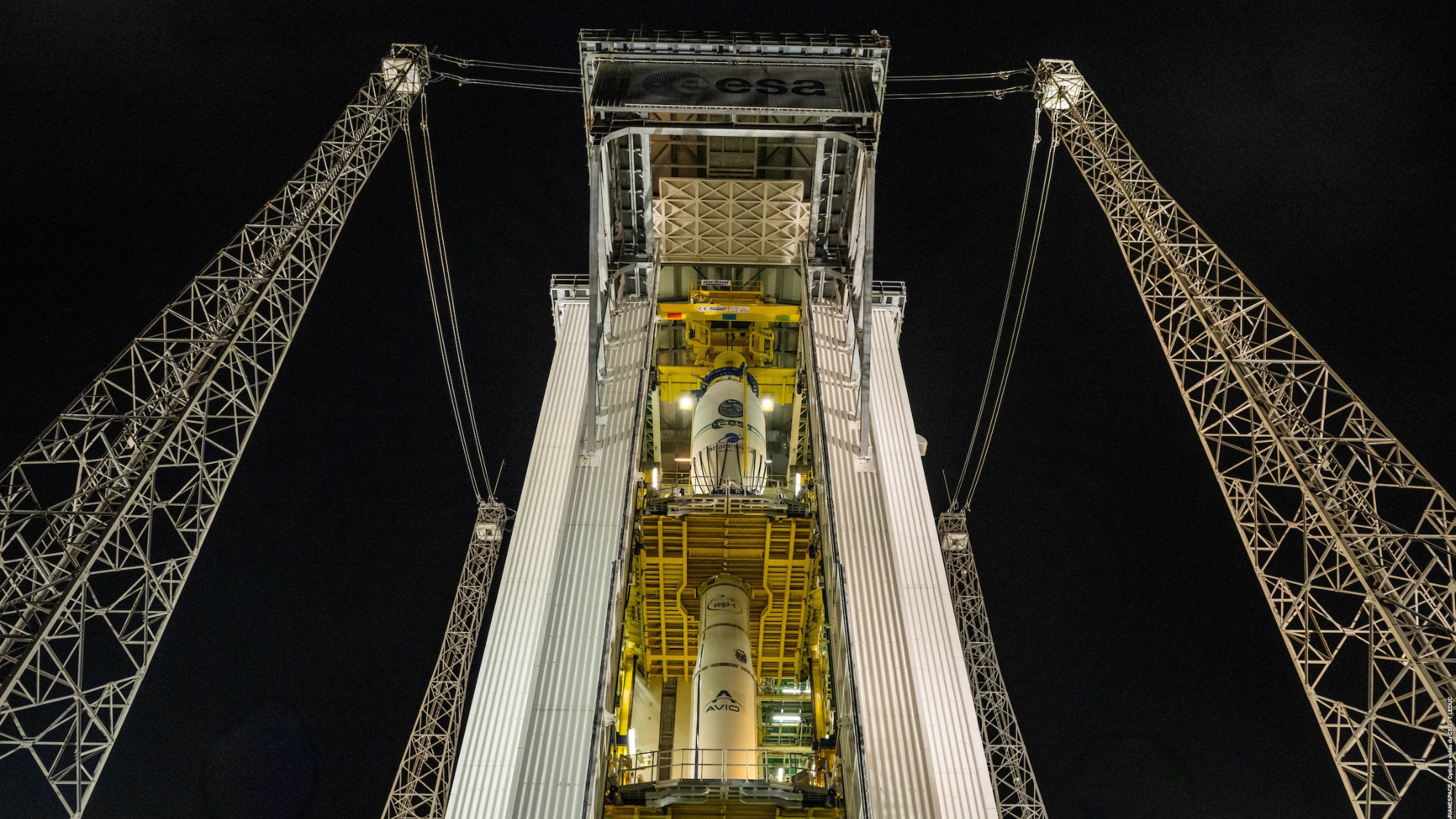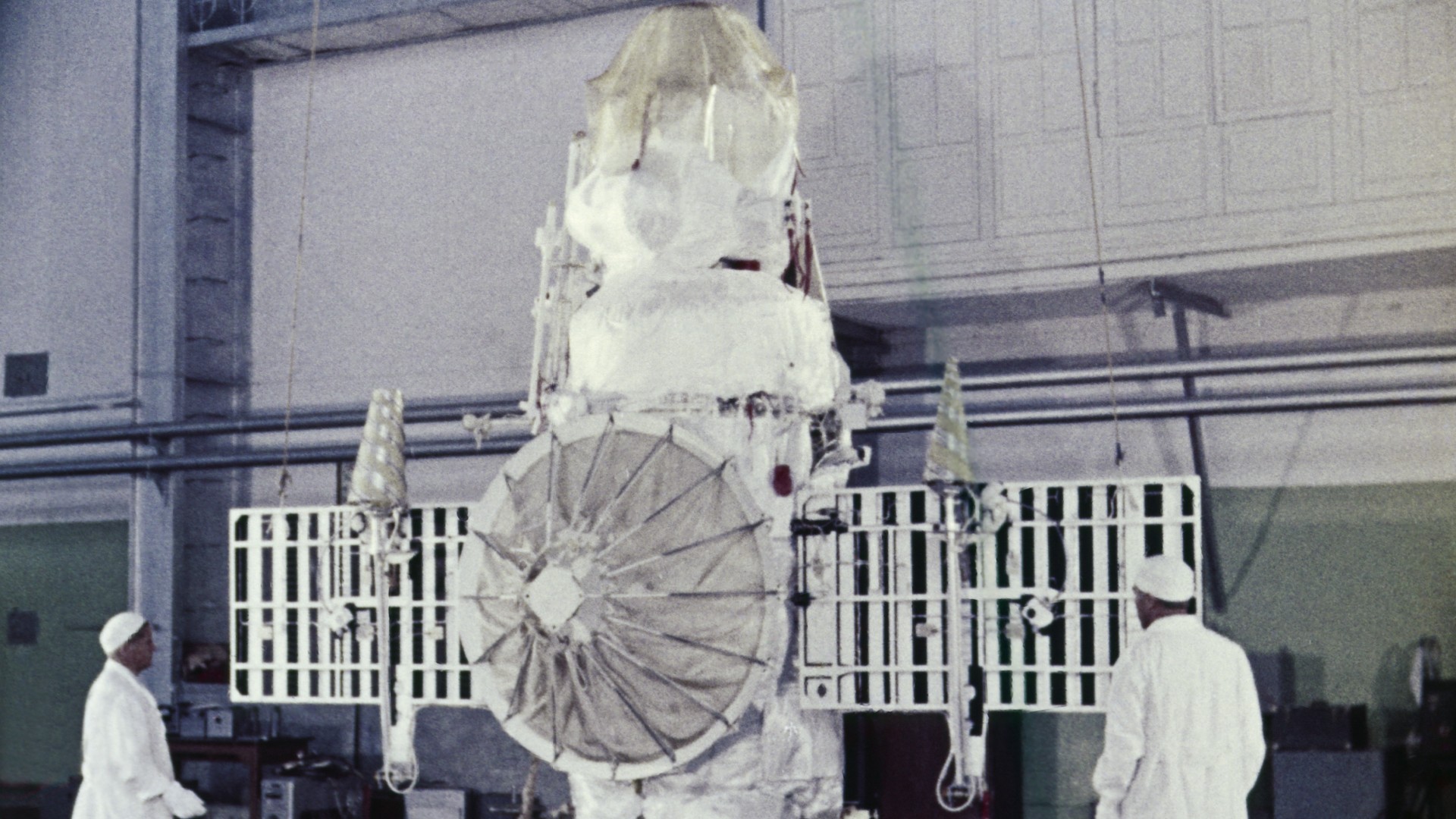European Cargo Ship Switches to Backup Propulsion System

PARIS-- Managers of Europe's large cargo vessel launched Sunday to the InternationalSpace Station said they likely will modify their planned in-orbit test scheduleas they investigate why one of the vehicle's four propulsion systems was shutdown by an on-board computer shortly after launch.
Theysaid that even if the affected system remains shut down, the Automated TransferVehicle (ATV) can continue its mission and dock as planned with the spacestation. The ATV Jules Verne liftedoff Sunday at 3:03 a.m. GMT (11:03 p.m. March 8 GMT) atop an Ariane 5rocket that launched from European spaceport in Kourou, French Guiana.
Ina March 9 press briefing, officials from the European Space Agency (ESA) andfrom the ATV's prime contractor, Astrium, said the vehicle's on-board computerdid its job correctly in shutting down one of the four propulsion systems afterfinding an unexpected difference in pressure between the system's fuel linesand its oxidizer lines.
Thepropulsion function was automatically transferred to a second system, whichreported no similar problems.
JohnEllwood, ESA's ATV mission manager, said in an interview that all other ATVsystems appear to be in good health, with the craft in a stable, 161-mile (260-km)circular orbit. While the ATV had been scheduled to climb closer to thestation's 214-miles (345-km) orbit in the next couple of days, Ellwood said thereis "absolutely no rush for us to do this. We have plenty of time and weare going to be looking carefully at this anomaly."
NicolasChamussy, Astrium's ATV program manager, said the vehicle -- often described asthe mostcomplex machine ever launched into space by Europe -- is designed to function with only three ofthe four propulsion systems operating.
"Whatwe have had so far is the nominal operation of the ATV failure detection,isolation and recovery system," Chamussy said during the press briefing,held at Europe's Guiana Space Center spaceport in French Guiana several hoursafter the launch aboard a specially designed Ariane 5 rocket. "We haddetection of an anomaly, and its isolation, with the [propulsion] chain beingput aside. Now we are in recovery mode, and we can reintegrate this chain if itis demonstrated that it is safe and will not endanger anything."
Get the Space.com Newsletter
Breaking space news, the latest updates on rocket launches, skywatching events and more!
The ATV hadbeen scheduled to climb into its operational orbit and then begin a series of maneuversto demonstrate to the station's partners -- the United States, Russia, Japanand Canada in addition to Europe -- that the 41,887-pound (19,000-kg) vehiclecan safelydock with the station. The ATV is about three times the size of Russia'sunmanned Progress cargo vessel.
Acollision-avoidance maneuver demonstration had been planned for March 12, butEllwood said that could be postponed if ATV controllers want to spend more timeexamining the propulsion issue.
Dockingwith the station still is tentatively scheduled for April 3.
Ellwoodsaid the ATV's Propulsion Drive Electronics (PDE) element controlling theaffected propulsion system shut itself off after transferring propulsionresponsibility, as it is designed to do.
"ThePDE detected some difference in pressure between the [oxidizer and the fuellines]," Ellwood said. "As planned, the software took over, putcontrol over to the other [propulsion] chain, and then it turned itself off,just in case the anomaly is in the [PDE] itself.
Ellwoodsaid ATV managers have a large amount of telemetry data on the vehicle'sdifferent systems, including the propulsion system, that they will need toanalyze before deciding how to proceed.
“We have a10-day margin before we need to start going into demo days at the end of themonth," Ellwood said. "We are obviously not going to take anyrisks."
Ellwoodsaid the only other notable glitch during the launch was a short-lived issuewith NASA over the use of the U.S. space agency's Tracking and Data RelaySatellite System (TDRSS), which the ATV needs during launch to communicate withthe ground.
ATVmanagers during the launch realized they were not getting the planned level ofuse of TDRSS as the ATV climbed into orbit. "You know, a lot of satellitesare using" TDRSS, Ellwood said. "We were in touch with NASA and theyrealized the priorities weren't quite right. They actually got rid of anotherpayload, which wasn't a high-priority payload. That was 30 seconds after thesecond boost [of the ATV by the Ariane 5's specially designed upper stage].That could have been horrific, but we had a good procedure [with NASA] to dothat."
- VIDEO:Part 1: Europe's First ISS Cargo Ship
- VIDEO:Part 2: Jules Verne, Europe's First ISS Cargo Tug
- VIDEO:Columbus: Europe's Orbital Lab at ISS
Join our Space Forums to keep talking space on the latest missions, night sky and more! And if you have a news tip, correction or comment, let us know at: community@space.com.

Charles Q. Choi is a contributing writer for Space.com and Live Science. He covers all things human origins and astronomy as well as physics, animals and general science topics. Charles has a Master of Arts degree from the University of Missouri-Columbia, School of Journalism and a Bachelor of Arts degree from the University of South Florida. Charles has visited every continent on Earth, drinking rancid yak butter tea in Lhasa, snorkeling with sea lions in the Galapagos and even climbing an iceberg in Antarctica. Visit him at http://www.sciwriter.us









